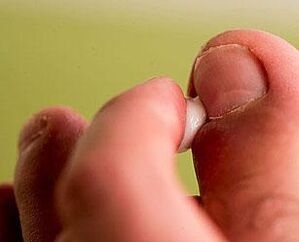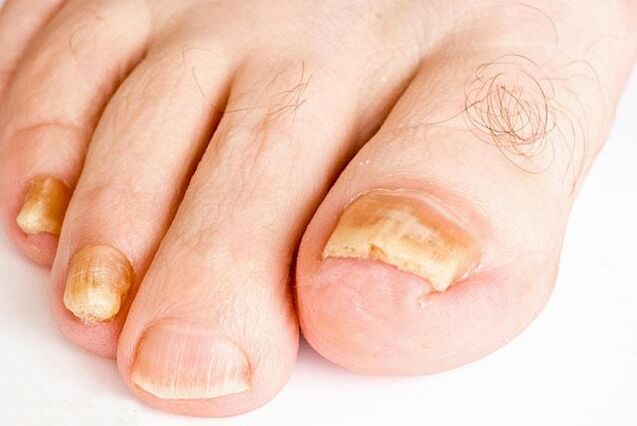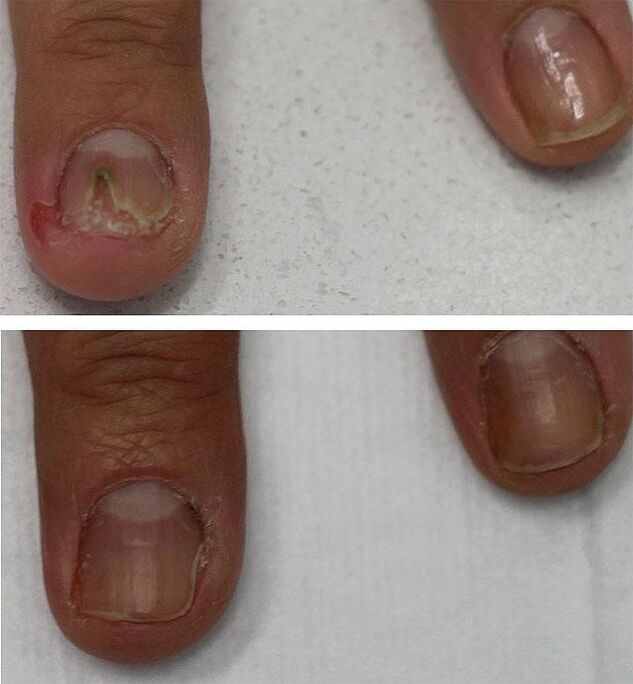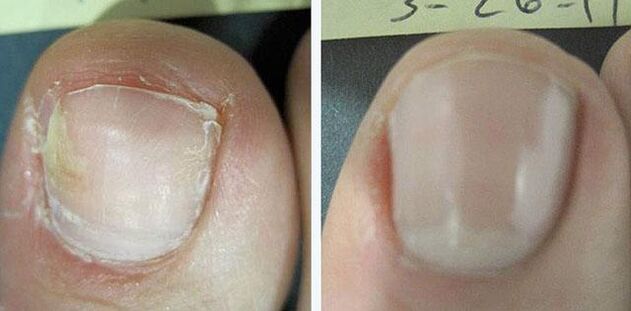
Onychomycosis is a widespread (up to 18% of the population) fungal nail disease. It affects people of all ages, and an increase in the number of people affected in the last decade has also been recorded among adolescents and children. Due to high contact and frequent recurrences, treating nail fungus on the hands and feet is a complex and time consuming process.
When does the infection occur?
- In families with general use of shoes, household items (bath mats) and body care products (washcloths, manicure sets);
- When visiting swimming pools, showers in gyms and businesses, saunas and bathrooms.
Pathogens
Effective treatment of nail fungus is possible only with an accurate laboratory diagnosis of the pathogen. In almost 90% of cases, onychomycosis is caused by different types of dermatophytes. A certain type affects the corresponding parts of the body that are characteristic of it:
- toenails and hands, as well as any part of the skin;
- nail plates on the feet and on the skin of III-IV interdigital spaces, arch of the foot, upper third of the sole, lateral surfaces of the toes.
In rare cases, the disease is caused by other types of fungi - trichophytos, epidermophytos, and much less often - similar to yeast. Very rarely, onychomycosis can be caused by mold that affects the nails in the area of the first toes, mostly in people over 50 years of age.
Contributing factors
Favorable conditions for the introduction and development of infection:
- Damage to the nail plate and the skin around it. This often happens as a result of wearing tight shoes, cosmetic procedures.
- Fractures of the toes and bones of the foot or hand.
- Swelling of the legs with heart disease, removal of atherosclerosis of the lower extremities, varicose veins, Raynaud's disease (spasms of the arteries of the upper extremities).
- Endocrine diseases (especially diabetes mellitus).
- Pregnancy (due to hormonal changes and reduced immunity).
- Decreased general immunity.
- Congenital anomalies in the formation of the stratum corneum of the skin.
- Severe and long-term chronic diseases that reduce the body's defenses.
- Long-term treatment with corticosteroid drugs and antibiotics, systemic and other immune diseases.
The possibility of transmitting the infection in the body through blood and lymph has already been proven.
Diagnosis of onychomycosis
The diagnosis of fungal infection is based on local and general clinical manifestations and laboratory research.

Clinical manifestations
The symptoms are very varied and depend on the type and type of pathogen. Separately, toenails (80%) and hands can be affected; simultaneous defeat of the nails of the lower and upper extremities is less common.
Depending on the nature of the change on the nail plate, there are 4 forms of damage:
- Normotrophic- characterized by a yellowish color of the end edge of the nail plate. It becomes dull and thickened due to the epidermal stratum corneum (subungual hyperkeratosis). The shape of the affected nails does not change for long.
- Hypertrophic, in which the nail becomes yellowish and thickens, the edges are loosened. Transverse striation appears gradually. The nail plate becomes dirty gray and dull. In some cases (usually on the toes) it thickens, becomes long and curved like a bird’s claw or beak (onychogryphosis).
- Atrophic- nails are cloudy, grayish or yellow. They change their shape, collapse at the extreme edge, partially exposing the bed. The latter is covered with loose layers of the stratum corneum.
- Onycholysis- Separation of the nail plate from the bed. With this form of fungal infection, the normal color remains only in the root area. The rest of the nail becomes thinner, separates from the bed, loses its shine and becomes yellowish or grayish dirty.
Combined shapes are often used. These clinical manifestations are not specific for certain types of fungal lesions. They can also be present in diseases that are not related to fungi.
Some common manifestations are also possible: allergic rash on the body, increased fatigue and decreased appetite. They are explained by the ability of some types of dermatophytes to cause allergic restructuring of the body, and mold fungi - to release toxins, which leads to chronic intoxication of the whole body.
Laboratory diagnostics
It consists of collecting material (particles of layers of the epidermis, pieces of nails). The material taken is poured with a caustic solution of alkali, left for 24 hours at a temperature of about 20 degrees, after which it is examined under a microscope. This technique allows a differential diagnosis between fungal and non-fungal lesions. In the presence of the fungus, threads of different thicknesses and shapes, groups of spores are visible under the microscope.
After that, the material is sown on a special nutrient medium for the growth of the pathogen, followed by the identification of its type and determination of sensitivity to antifungal drugs.
Treatment characteristics
When choosing a method of therapy, the shape, type and extent of the lesion, the rate of nail growth, the general condition of the body and the side effects of the drugs used are taken into account, especially in the case of concomitant diseases. Based on these principles, the treatment of nail fungus on the feet, as well as the hands, consists of a local or complex effect.
Principles of local influence
It is possible if:
- the infection did not affect all the nails;
- the defeat of each of the infected nail plates is less than half of its surface;
- the procedure is located only on the end and side parts of the plate without involving the roots;
- there are contraindications to the use of systemic drugs.
Local drug treatment
It consists in the use of a cream, solution or nail polish that contains substances that soften the nail plate. They also include medications to treat fungus on the nails of the hands, which suppress the growth and development of infection:
You can pre-apply any preparations to soften the plate and remove layer by layer, as in the first case, and then apply 2 times a day broad-spectrum antifungal drugs in the form of creams or solutions. At the same time they need to be rubbed into the surrounding skin.

Medical hardware pedicure
Medical pedicure is used as an additional procedure (but not a treatment! ) Which shortens the treatment time. Its essence is the use of a milling machine with a nozzle in the shape of a metal or diamond cutter. This device greatly facilitates the painless removal of a previously softened nail on its bearing. The use of a hardware method is desirable when more than 60% of the nail plate surface is damaged, but it does not replace further treatment with antifungal agents.
Surgery
In cases of severe forms of onychomycosis with severe nail deformity, it is sometimes removed surgically under general anesthesia or conduction anesthesia with further use of antifungal drugs. The main disadvantage of the method is the damage to the nail layer, as a result of which the newly grown plate lags behind and has an irregular shape.
Laser treatment
This method consists of heating the nail with laser radiation in the short-pulse range to a temperature of 45-47 degrees, at which dermatophytes die. The procedure is most effective in the initial stages of nail damage without deformation. Depending on the weight, it is necessary to conduct 1 to 8 sessions with an interval of 7 to 60 days. In severe lesions, local and systemic treatment should be performed.

Systemic drug therapy
It is indicated for multiple nail lesions, root involvement in the process and in the absence of local exposure.
The most effective remedies for treating nail fungus are tablets. containing substances such as terbinafine, fluconazole and others. They are prescribed for courses of 3-4 months, and remain in the body after the end of treatment for up to 9 months. The last two drugs, due to their toxic effects on the liver, are used much less frequently.
Systemic treatment is contraindicated in kidney and liver disease. During pregnancy and breastfeeding, only local treatment of 1-2 nails is possible, but it is better to refrain from that.
























